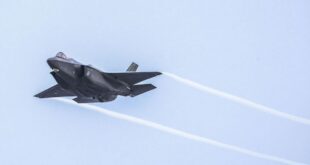The King’s coronation plans are being drip-fed to the public in the run-up to the ceremony on Saturday.
King Charles and Queen Camilla will be officially crowned during a historic service at Westminster Abbey, with a modern, slimmed-down approach to proceedings.
Nonetheless, some things never change – especially when it comes to the monarchy – and Charles will wear some spectacular, traditional jewels during the coronation.
St Edward’s crown
The St Edward’s crown is used at the moment of the King’s coronation.
Weighing 2.23kg (nearly 5lb), it is the heaviest crown of the Crown Jewels.
In 1953, the then-archbishop of Canterbury Dr Geoffrey Fisher raised it aloft and placed it on Elizabeth II’s head.
“By a glance she indicated it was steady,” he later recalled.
It has a solid gold frame and is set with tourmalines, white and yellow topazes, rubies, amethysts, sapphires, garnet, peridot, zircons, spinel and aquamarines, step-cut and rose-cut and mounted in enamelled gold collets, and has a purple velvet cap with an ermine band.
The crown was made for the coronation of Charles II in 1661 and was a replacement for the medieval crown, which was melted down on the orders of Oliver Cromwell in 1649 after the execution of Charles I.
The original was thought to date back to the 11th-century royal saint, Edward the Confessor, the last Anglo-Saxon king of England.
Although it is not an exact replica of the medieval design, it follows the original in having four crosses pattée, four fleurs-de-lis and two arches.
It is St Edward’s crown that appears in the royal coat of arms of the United Kingdom, the Royal Mail logo and in badges of the Armed Forces.
Such was its weight, the late Queen practised wearing it around Buckingham Palace ahead of her coronation to ensure she could move with it on her head.
Under a top secret operation, the crown was briefly removed from the Tower of London to be resized to fit the King’s head.
Imperial State crown
The Imperial State crown is a worn by the monarch as they leave Westminster Abbey after the coronation.
It is also the crown that has been sitting on the Queen’s coffin during the lying-in-state and throughout the state funeral.
It was made for the coronation of King George VI, the Queen’s father, in 1937, replacing the crown made for Queen Victoria in 1838.
The crown is made of gold and set with 2,868 diamonds, 269 pearls, 17 sapphires, 11 emeralds, and four rubies.
It contains some of the most famous jewels in the collection – the Black Prince’s Ruby, the Stuart Sapphire, and the Cullinan II diamond.
St Edward’s sapphire, set in the centre of the topmost cross, is said to have been worn in a ring by St Edward the Confessor and was discovered in his tomb in 1163.
The crown played a part in the Queen’s Committal Service, which started at 4pm in St George’s Chapel, Windsor Castle, several hours after the state funeral at Westminster Abbey, conducted by David Conner, the Dean of Windsor, and attended by a congregation of 800 guests.
These included the King, the Royal Family, realm prime ministers, governors-general and mourners from the Queen’s household past and present, including personal staff from across her private estates.
During the service, the Imperial State Crown, the Orb and the Sceptre were lifted from the Queen’s coffin by the Crown Jeweller, separating the Queen from her crown for the final time.
Source link




